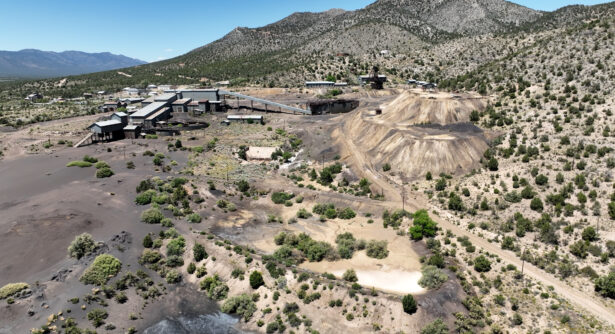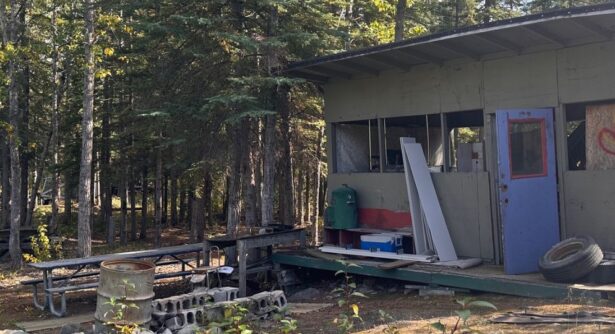
Nonprofits as Community Catalysts: Leading the Charge in Local Development
For years, community leaders have operated under a prevailing assumption: that development is the exclusive domain of outside investors. We’ve spent countless hours trying to woo developers to our communities, showcasing our best assets and offering incentives to sweeten the deal. But what if we didn’t have to? What if the solution was already within our grasp?
This is the powerful idea at the heart of nonprofit-led development. Nonprofits, with their deep community roots, mission-driven focus, and unique access to resources, are not just capable of leading development— they’re uniquely positioned to be the most effective developers for their communities.
On August 21st, redevelopment experts Kate Greene, Redevelopment Director at Atlas Community Studios and Lori McKinney, Co-Founder and Executive Director of RiffRaff Arts Collective shared tips and advice to non profit organizations ready to take the lead on redevelopment. Watch the webinar here.
Redefining the “Developer”
The term “developer” often conjures images of powerful individuals with bottomless pockets and a mastery of complex financial tools. We tend to view them as figures of mystery who use a combination of “money, magic and bulldozers” to get projects done. However, this is a myth. As Kate Greene, points out, “development is just a process, and they are just people following the steps in the process.”
The truth is, development is a complex undertaking with many moving parts, but it is not an exclusive club. The skills required, from project management and leadership to networking and financial planning, are often already present within our communities. The key is to recognize these skills and to build the right team around a shared vision. Nonprofits are naturally strong in many of these areas, particularly in their ability to convene stakeholders, build trust, and maintain a clear, purpose-driven focus.
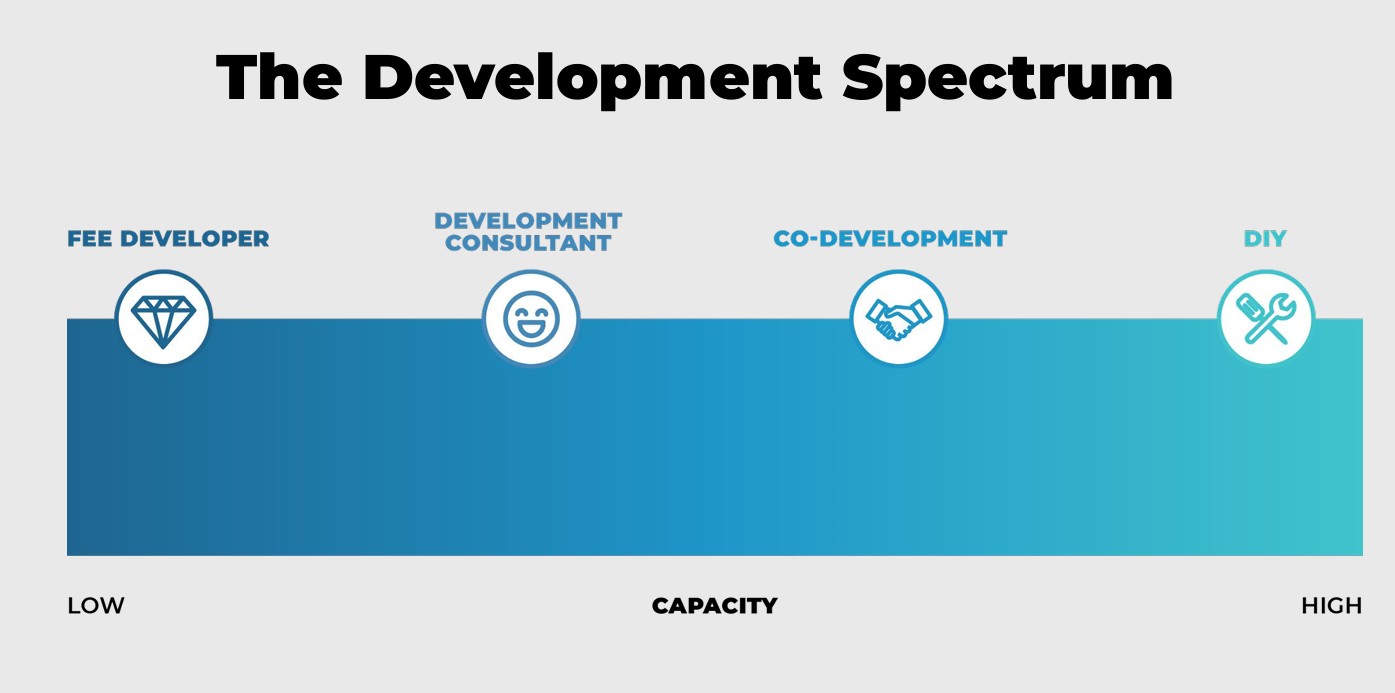
The Nonprofit Advantage
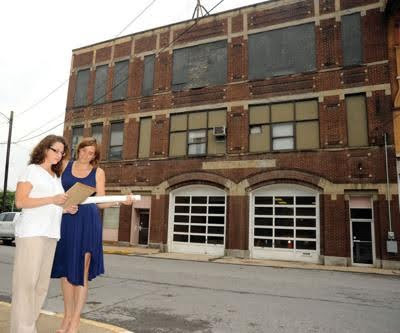
Kate Greene (right) looks over redevelopment plans
Nonprofits have a distinct advantage over outside developers. Unlike an investor focused primarily on profit margins, a nonprofit is driven by its mission and community values. This alignment ensures that projects are not just financially viable but also socially and culturally beneficial. “Nonprofits have deep community knowledge and strong, trusted relationships that are invaluable assets that outside developers lack.” Says Greene. An external firm would need years to build the credibility that a local nonprofit already possesses.
Moreover, nonprofits have access to funding sources that are typically unavailable to private developers. Grants, donations, and special tax credits can be used to leverage projects and reduce reliance on traditional debt, providing a creative and resilient financial structure. By taking on a development project, a nonprofit can also strengthen its own long-term stability by diversifying its revenue streams and building assets. It’s a win-win: the organization grows while its mission advances.
A Call to Action: The Power of Local Ownership
So, what is the central motivation behind this approach? It’s the belief that local ownership is the most effective way to build stronger, more resilient communities. As Kate Greene passionately explains, too often, the wealth generated by outside investment leaves the community. When locals—residents, business owners, and nonprofits—lead the charge, the financial returns are more likely to stay local, benefiting everyone. This leads to a greater sense of community pride and a more sustained, long-term investment in the property.
Kate shared a powerful anecdote from her own experience as a Main Street organization director. After years of trying to attract external developers with no success, her organization decided to take a chance. “I think the best way to show people that our downtown is worth investing in is that we just need to do it ourselves,” she recalled. With no prior experience, they purchased and redeveloped the “worst building in downtown,” turning it into a mixed-use success. This single project became a catalyst, inspiring at least six other local, first-time developers to invest in their community. It proved that sometimes, the only thing you need is to show that it’s possible.
Finding Your Starting Point: Insights from a Creative Developer
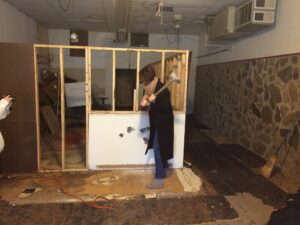
Non profits can save money on redevelopment by lending a hand with tasks such as demolition
Lori McKinney, a creative and founder of an arts-based nonprofit based in Princeton, West Virginia didn’t think she would become a developer. When a historic building became available in the perfect location to display a collection of historical items in a new museum, Lori believed the City would lead the project. However, the pieces of the project began to fall into place in a way that pointed to her nonprofit as the natural leader.
To those wondering how to begin, particularly in small communities where outside help seems nonexistent, Lori’s experience offers a roadmap. The most critical step is to embrace your role as a convener. Nonprofits are already experts at bringing people together. This is a crucial, yet often overlooked, part of the development process.
Lori’s advice for how to start is rooted in this principle:
- Connect the Dots: Focus on what you know and what you’re good at. Lori realized her strength was in orchestrating people, ideas, and events. She identified the “seed” of the project—the remarkable historical collection—and started connecting it with the right people and opportunities. Don’t be afraid to think creatively about how your organization’s core strengths, even if they aren’t “development-related,” can be applied to a physical project.
- “Challenge the Narrative: The biggest hurdle is often a mental one. Lori and Kate both initially believed they weren’t qualified. As Kate noted, the fear is “it can’t possibly be me.” Start by reframing this idea. Instead of asking who can save us,” ask, “What can we do to save ourselves?” This simple shift in mindset empowers you to take the first step.
- Build a Collaborative Team: As Kate emphasized, no developer is a “one-man band.” You don’t have to know everything. The most successful projects are led by a project manager who can assemble a skilled team. You can be the convener who brings together people with expertise in law, finance, architecture, and construction. Your role is not to be the expert in every field, but to be the leader who brings the right experts to the table.
Key Takeaways and Final Thoughts
- You are already a developer. Nonprofits possess the core skills—leadership, community connection, and project management—needed to lead successful redevelopment projects.
- Local ownership is a game-changer. When a community owns its development, the financial benefits and social returns are more likely to stay local, building lasting wealth and pride.
- Access to funding is a distinct advantage. Nonprofits can leverage non-debt funding like grants and donations, which provides more creative and resilient financial options.
- Start with your mission. The “vision and purpose” of your project should be your guiding star, informing every decision and keeping you on track, even when the process feels overwhelming.
- Don’t be afraid to take a calculated risk. While development can be risky, your mission-driven approach and strong community support can mitigate many of these risks and pave the way for a transformative project.
In a world where many communities feel overlooked, the message is clear: the most effective solution may be the one you can build yourself.
CCLR utilized AI to transcribe the “Built By Us” webinar and format the webinar content into this blog post. The content of this post was reviewed and edited by CCLR experts before publication.



